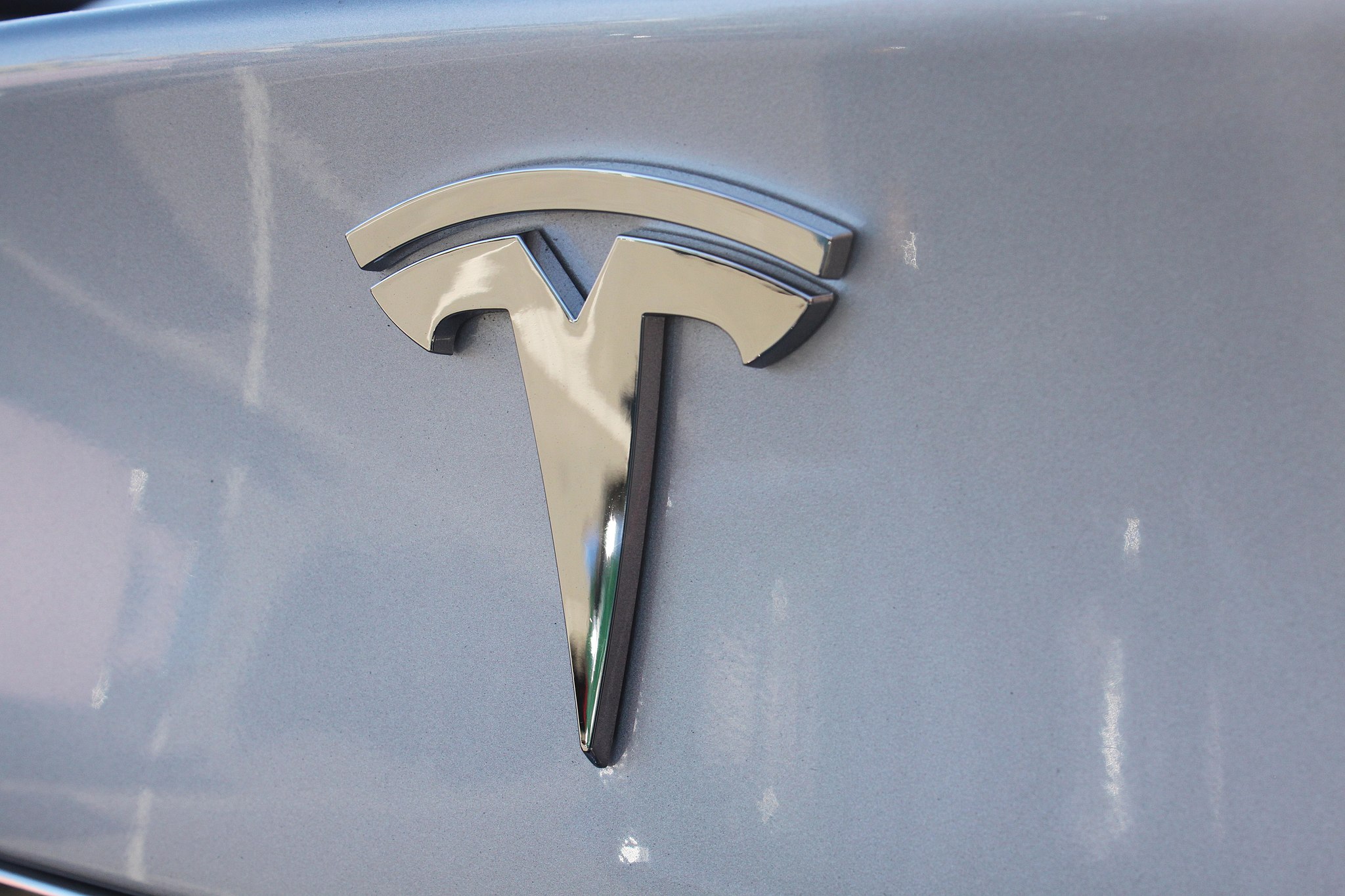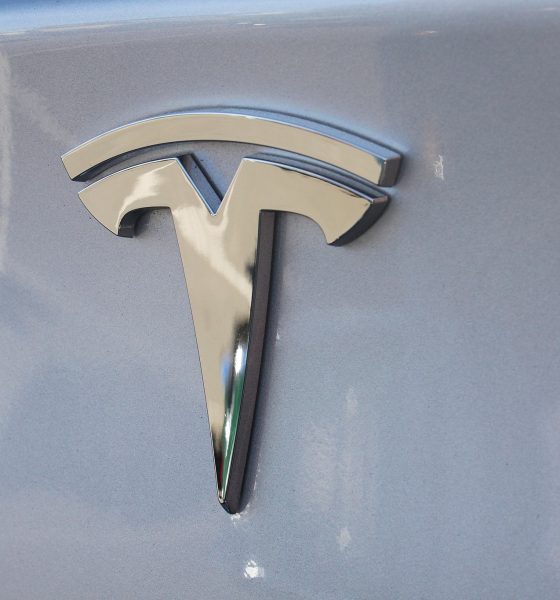

News
Tesla argues human error caused fatal 2019 crash, not Autopilot: report
Tesla now faces the jury’s verdict in a trial alleging that Autopilot caused a fatality, and the trial is expected to set a precedent for future cases surrounding advanced driver assistance systems (ADAS). During closing arguments on Tuesday, an attorney for the plaintiffs pointed to an analysis Tesla conducted two years before the accident, claiming that the automaker knowingly sold the Model 3 with a safety issue related to its steering.
The trial began in California late last month after a 2019 incident in which 37-year-old Micah Lee veered off a highway outside Los Angeles at 65 miles per hour, suddenly striking a palm tree before the vehicle burst into flames. According to court documents, the crash killed Lee and injured both of his passengers, one of whom was an 8-year-old boy.
Lee’s passengers and estate initiated a civil lawsuit against Tesla, alleging that the company knew that Autopilot and its other safety systems were defective when it sold the Model 3.
Tesla has denied any liability in the accident, claiming that Lee had consumed alcohol before getting behind the wheel and saying it could not detect if Autopilot was engaged at the time of the crash.
This and other trials come as regulatory requirements for ADAS suites are just emerging, and the cases are expected to help navigate future court cases related to accidents with the systems.
According to Reuters, the attorney for the plaintiffs, Jonathan Michaels, showed the jury an internal safety analysis from Tesla in 2017 during closing arguments, in which employees identified “incorrect steering command” as a potential safety issue. Michaels said the issue involved an “excessive” steering wheel angle, arguing that Tesla was aware of related safety problems before selling the Model 3.
“They predicted this was going to happen. They knew about it. They named it,” Michaels said.
Michaels also said that Tesla created a specific protocol to deal with affected customers and that the company instructed workers to avoid accepting liability for the issue. Michaels also echoed prior arguments, saying that Tesla knew it was releasing Autopilot in an experimental state, though it needed to do so to boost market share.
“They had no regard for the loss of life,” Michaels added.
Michael Carey, Tesla’s attorney, said that the 2017 analysis wasn’t meant to identify the defect but instead was meant to help avoid any potential safety issues that could theoretically occur. Carey also said that Tesla developed a system to prevent Autopilot from making the same turn that had caused the crash.
Carey said that the subsequent development of the safety system “is a brick wall standing in the way of plaintiffs’ claim,” adding that there haven’t been any other cases where a Tesla has maneuvered the way that Lee’s did.
Instead, Carey argued to the jury that the crash’s simplest explanation was human error, asking jurors to avoid awarding damages on behalf of the severe injuries encountered by the victims.
“Empathy is a real thing, we’re not saying its not,” Carey argued. “But it does not make cars defective.”
Earlier this month, a federal judge in California ruled in Tesla’s favor in a similar case looking at whether the automaker misled consumers about its Autopilot system’s capabilities. In that case, which had the chance to become a class-action lawsuit, the judge ruled that most of the involved plaintiffs had signed an arbitration clause when purchasing the vehicle, requiring the claims to be settled outside of court.
The cases are expected to set precedents in court for future trials involving Tesla’s Autopilot and Full Self-Driving (FSD) beta systems and the degree of the automaker’s responsibility in accidents related to their engagement. Tesla is also facing additional information requests from the U.S. Department of Justice related to its Autopilot and FSD beta.
Tesla has received more requests regarding Autopilot and FSD from DOJ
What are your thoughts? Let me know at zach@teslarati.com, find me on X at @zacharyvisconti, or send your tips to us at tips@teslarati.com.

News
Tesla FSD fleet is nearing 7 billion total miles, including 2.5 billion city miles
As can be seen on Tesla’s official FSD webpage, vehicles equipped with the system have now navigated over 6.99 billion miles.

Tesla’s Full Self-Driving (Supervised) fleet is closing in on almost 7 billion total miles driven, as per data posted by the company on its official FSD webpage.
These figures hint at the massive scale of data fueling Tesla’s rapid FSD improvements, which have been quite notable as of late.
FSD mileage milestones
As can be seen on Tesla’s official FSD webpage, vehicles equipped with the system have now navigated over 6.99 billion miles. Tesla owner and avid FSD tester Whole Mars Catalog also shared a screenshot indicating that from the nearly 7 billion miles traveled by the FSD fleet, more than 2.5 billion miles were driven inside cities.
City miles are particularly valuable for complex urban scenarios like unprotected turns, pedestrian interactions, and traffic lights. This is also the difference-maker for FSD, as only complex solutions, such as Waymo’s self-driving taxis, operate similarly on inner-city streets. And even then, incidents such as the San Francisco blackouts have proven challenging for sensor-rich vehicles like Waymos.
Tesla’s data edge
Tesla has a number of advantages in the autonomous vehicle sector, one of which is the size of its fleet and the number of vehicles training FSD on real-world roads. Tesla’s nearly 7 billion FSD miles then allow the company to roll out updates that make its vehicles behave like they are being driven by experienced drivers, even if they are operating on their own.
So notable are Tesla’s improvements to FSD that NVIDIA Director of Robotics Jim Fan, after experiencing FSD v14, noted that the system is the first AI that passes what he described as a “Physical Turing Test.”
“Despite knowing exactly how robot learning works, I still find it magical watching the steering wheel turn by itself. First it feels surreal, next it becomes routine. Then, like the smartphone, taking it away actively hurts. This is how humanity gets rewired and glued to god-like technologies,” Fan wrote in a post on X.
News
Tesla starts showing how FSD will change lives in Europe
Local officials tested the system on narrow country roads and were impressed by FSD’s smooth, human-like driving, with some calling the service a game-changer for everyday life in areas that are far from urban centers.

Tesla has launched Europe’s first public shuttle service using Full Self-Driving (Supervised) in the rural Eifelkreis Bitburg-Prüm region of Germany, demonstrating how the technology can restore independence and mobility for people who struggle with limited transport options.
Local officials tested the system on narrow country roads and were impressed by FSD’s smooth, human-like driving, with some calling the service a game-changer for everyday life in areas that are far from urban centers.
Officials see real impact on rural residents
Arzfeld Mayor Johannes Kuhl and District Administrator Andreas Kruppert personally tested the Tesla shuttle service. This allowed them to see just how well FSD navigated winding lanes and rural roads confidently. Kruppert said, “Autonomous driving sounds like science fiction to many, but we simply see here that it works totally well in rural regions too.” Kuhl, for his part, also noted that FSD “feels like a very experienced driver.”
The pilot complements the area’s “Citizen Bus” program, which provides on-demand rides for elderly residents who can no longer drive themselves. Tesla Europe shared a video of a demonstration of the service, highlighting how FSD gives people their freedom back, even in places where public transport is not as prevalent.
What the Ministry for Economic Affairs and Transport says
Rhineland-Palatinate’s Minister Daniela Schmitt supported the project, praising the collaboration that made this “first of its kind in Europe” possible. As per the ministry, the rural rollout for the service shows FSD’s potential beyond major cities, and it delivers tangible benefits like grocery runs, doctor visits, and social connections for isolated residents.
“Reliable and flexible mobility is especially vital in rural areas. With the launch of a shuttle service using self-driving vehicles (FSD supervised) by Tesla in the Eifelkreis Bitburg-Prüm, an innovative pilot project is now getting underway that complements local community bus services. It is the first project of its kind in Europe.
“The result is a real gain for rural mobility: greater accessibility, more flexibility and tangible benefits for everyday life. A strong signal for innovation, cooperation and future-oriented mobility beyond urban centers,” the ministry wrote in a LinkedIn post.
News
Tesla China quietly posts Robotaxi-related job listing
Tesla China is currently seeking a Low Voltage Electrical Engineer to work on circuit board design for the company’s autonomous vehicles.

Tesla has posted a new job listing in Shanghai explicitly tied to its Robotaxi program, fueling speculation that the company is preparing to launch its dedicated autonomous ride-hailing service in China.
As noted in the listing, Tesla China is currently seeking a Low Voltage Electrical Engineer to work on circuit board design for the company’s autonomous vehicles.
Robotaxi-specific role
The listing, which was shared on social media platform X by industry watcher @tslaming, suggested that Tesla China is looking to fill the role urgently. The job listing itself specifically mentions that the person hired for the role will be working on the Low Voltage Hardware team, which would design the circuit boards that would serve as the nervous system of the Robotaxi.
Key tasks for the role, as indicated in the job listing, include collaboration with PCB layout, firmware, mechanical, program management, and validation teams, among other responsibilities. The role is based in Shanghai.
China Robotaxi launch
China represents a massive potential market for robotaxis, with its dense urban centers and supportive policies in select cities. Tesla has limited permission to roll out FSD in the country, though despite this, its vehicles have been hailed as among the best in the market when it comes to autonomous features. So far, at least, it appears that China supports Tesla’s FSD and Robotaxi rollout.
This was hinted at in November, when Tesla brought the Cybercab to the 8th China International Import Expo (CIIE) in Shanghai, marking the first time that the autonomous two-seater was brought to the Asia-Pacific region. The vehicle, despite not having a release date in China, received a significant amount of interest among the event’s attendees.








